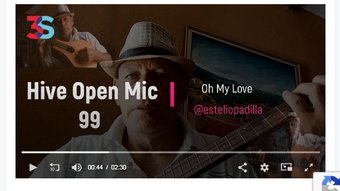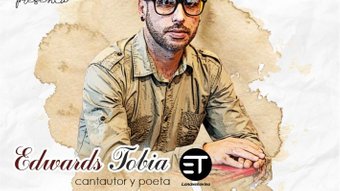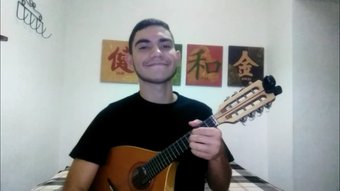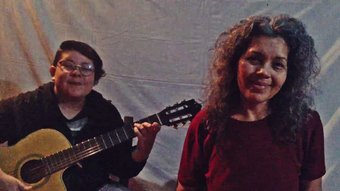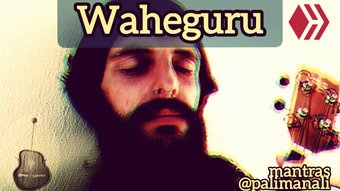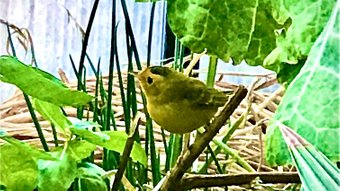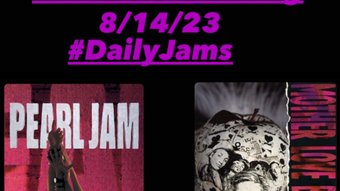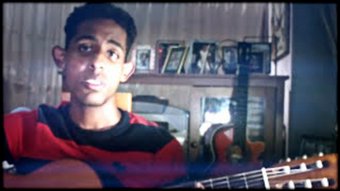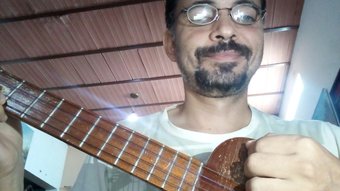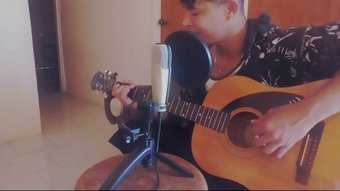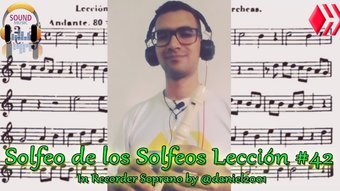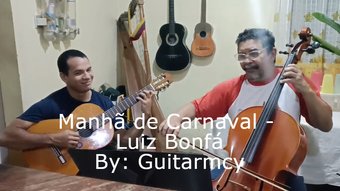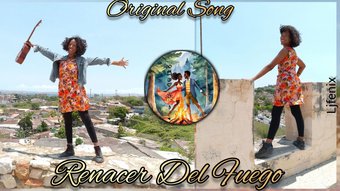0 seconds of 0 secondsVolume 90%
Press shift question mark to access a list of keyboard shortcuts
Keyboard Shortcuts
Shortcuts Open/Close/ or ?
Play/PauseSPACE
Increase Volume↑
Decrease Volume↓
Seek Forward→
Seek Backward←
Captions On/Offc
Fullscreen/Exit Fullscreenf
Mute/Unmutem
Decrease Caption Size-
Increase Caption Size+ or =
Seek %0-9
🎧 Romanza (Op.123 - Book I The Little School of Meoldía) Charles Dancla 🎧 by Estelio Padilla 🎧
About :
"Romanza" Op. 123 (Charles Dancla)
¡¡Hello my people Hive!!
Charles - Jean Baptiste - Dancla was a French violinist, composer and teacher who was born in Bagnères de Bigorre on December 19, 1817 and died in Tunis on November 10, 1907. On this occasion, I am going to present, from his book "The Little School of Melody" one of his "Romanza" for Violin with Piano accompaniment in Andante Cantabile tempo.
Charles - Jean Baptiste - Dancla fue un violinista, compositor y profesor francés que nació en Bagnères de Bigorre el 19 de diciembre de 1817 y murió en Túnez el 10 de noviembre de 1907. En esta oportunidad, voy a presentar, de su libro "La Pequeña Escuela de la Melodía" una de sus "Romanza" para Violín con acompañamiento de Piano en tempo Andante Cantabile.

Portrait of Charles Dancla
Dancla studied at the Paris Conservatory and Maestro Baillot was his violin teacher, while Fromental Halévy was his composition teacher. Dancla was strongly influenced by Niccolò Paganini , whom he listened to in 1830, as well as by Henri Vieuxtemps. From 1835, Dancla was a solo violinist at the Opera from Paris and soon after he became a concertmaster. In 1857 he was appointed professor at the Paris Conservatoire, where he was a successful professor for more than 35 years. He wrote 14 string quartets and a lot of music for male choir, numerous violin concertos, string quartets, string trios, violin duets, in addition to his famous Six Airs variés, Op. 89 for Violin on themes by Pacini, Rossini, Bellini, Donizetti, Weigl and Mercadante.
Dancla estudió en el Conservatorio de París y el maestro Baillot fue su profesor de violín, mientras que Fromental Halévy lo fue de composición. Dancla fue fuertemente influenciado por Niccolò Paganini, a quien escuchó en 1830, así como por Henri Vieuxtemps. A partir de 1835, Dancla fue violinista solista en la Ópera de París y poco después se convirtió en concertino. En 1857 fue nombrado profesor en el Conservatorio de París, donde fue un exitoso profesor durante más de 35 años. Escribió 14 cuartetos para cuerda y mucha música para coro masculino, numerosos conciertos para violín, cuartetos de cuerda, tríos de cuerdas, dúos de violín, además de sus famosos Six Airs variés, Op. 89 para Violín sobre temas de Pacini, Rossini, Bellini, Donizetti, Weigl y Mercadante.

Main page of one of the many editions that are
have made of Six Airs Variés
Dancla was a prolific composer and won seven awards in total for his String Quartets - which were 14 in total - and for his works for Male Choirs. However, it is through his didactic works that his music survives. He composed more than 130 pieces for violin. His most famous works are the 4 pieces for Violin that are in the book The School of Mechanism Op.74 (Op.23). Other of his well-known works are the 20 Brilliant Studies Op.73, the Six Airs Variés that we already discussed and a Progressive Violin Method for beginners published by Ricordi together with the 3 books on "The Little School of Melody ".
Dancla fue un compositor prolífico y ganó siete premios por sus Cuartetos de Cuerda - que fueron 14 en total - y por sus obras para Coros Masculinos. Sin embargo, es a través de sus trabajos didácticos que su música sobrevive. Compuso más de 130 piezas para violín. Sus obras más famosas son las 4 piezas para Violín que están en el libro La Escuela del Mecanismo Op.74 (Op.23). Otras de sus obras conocidas son los 20 Estudios Brillantes Op.73, los Six Airs Variés que ya comentamos y un Progresivo Método de Violín para principiantes publicado por Ricordi junto con los 3 libros sobre "La Pequeña Escuela de Melodía".

Main page of the Little School of Melody Book
Each of these last 3 books of "The Little School of Melody" contains a collection of pieces, which with regard to melody must be considered the definitive test of purity and execution of legato, which is a technique of special bow for stringed instruments such as the violin. This is an excellent test for young people who are in the early stage of studying the violin to grasp the essence of a true violin tone. From the Book "The Little School of Melody", here I interpret this beautiful "Romanza" on the Violin and, on this occasion, he accompanies me on the Piano @sebastianpadilla.
Cada uno de estos 3 últimos libros de "La Pequeña Escuela de la Melodía" contiene una colección de piezas, que en lo que respecta a la melodía deben considerarse la prueba definitiva de pureza y ejecución del legato que es una técnica de arco especial para los instrumentos de cuerdas como el violín. Esta es una excelente prueba para que los jóvenes que están en etapa temprana del estudio del violín capten la esencia de un verdadero tono violinístico. Del Libro "La Pequeña Escuela de la Melodía", interpreto esta bella "Romanza" y, en esta ocasión, me acompaña en el Piano @sebastianpadilla.

Romance of the Book 1 The Little School of Melody
@esteliopadilla

🎧 Keep your spaces clean 🎧 Have not fear 🎧
Show more
Tags :
Woo!
This creator can upvote comments using 3speak's stake today because they are a top performing creator!
Leave a quality comment relating to their content and you could receive an upvote
worth at least a dollar.
Their limit for today is $0!
Their limit for today is $0!
Cannot read properties of undefined (reading 'author')
8 views
3 years ago
$NaN
3 views
3 years ago
$NaN
9 views
3 years ago
$NaN
6 views
3 years ago
$NaN
2 views
3 years ago
$NaN
More Videos
En otro entrevista de radio- Hablando un poco de mi proyecto y mi próximo concierto este 26 de Novie
6 views
3 years ago
$NaN
10 views
2 years ago
$NaN
8 views
2 years ago
$NaN
10 views
2 years ago
$NaN
9 views
3 years ago
$NaN
13 views
2 years ago
$NaN
6 views
3 years ago
$NaN
24 views
a year ago
$NaN
1 views
5 years ago
$NaN
0 views
a year ago
$NaN
4 views
4 years ago
$NaN
1 views
2 years ago
$NaN
6 views
4 years ago
$NaN
2 views
5 years ago
$NaN
17 views
a year ago
$NaN
3 views
3 years ago
$NaN
49 views
5 years ago
$NaN
18 views
2 years ago
$NaN
21 views
a year ago
$NaN
29 views
4 years ago
$NaN
17 views
a year ago
$NaN
8 views
a year ago
$NaN
43 views
a year ago
$NaN
@s4s: 0.1946
@mbp: 0.1429
@partitura: 0.1144
@payroll: 0.0075
@sadikulaziz: 0.0063
@music-community: 0.0042
@aishwarya: 0.0028
@portugalcoin: 0.0026
@firepower: 0.0020
@mbp: 0.1429
@partitura: 0.1144
@payroll: 0.0075
@sadikulaziz: 0.0063
@music-community: 0.0042
@aishwarya: 0.0028
@portugalcoin: 0.0026
@firepower: 0.0020


